Power Brake Booster Replacement Booster
Notice: Hydraulic brake systems use two distinct and incompatible fluids. Power steering fluid is used in the hydraulic brake booster system. Brake fluid is used in the master cylinder and brake pipes. Use extreme care when selecting brake system fluids, or seal damage can result. Refer to General Information to select the correct fluid.
Checking and Adding Fluid
For information on checking and adding fluid to the hydraulic booster system, refer to Fluid Level in Power Steering System.
Bleeding the Hydraulic Booster System
Refer to Bleeding the Power Steering System in Power Steering System.
Flushing the Hydraulic Booster System
Refer to Flushing the Power Steering System in Power Steering System.
Hydraulic Booster System Pipes, Hoses, and Fittings
Refer to Power Steering Hoses in Power Steering System.
Power Steering Pump
Refer to Power Steering Pump Replacement in Power Steering System.
Removal Procedure
- Disconnect the negative battery cable.
- Apply the parking brake.
- Disconnect the inlet hose, the steering gear, and the return hoses from the booster assembly.
- Remove the master cylinder nuts.
- Remove the master cylinder and wiring harness bracket.
- Remove the stoplamp switch and the pushrod.
- Remove the nuts.
- Remove the booster assembly.
- Remove the gasket.
Caution: Unless directed otherwise, the ignition and start switch must be in the OFF or LOCK position, and all electrical loads must be OFF before servicing any electrical component. Disconnect the negative battery cable to prevent an electrical spark should a tool or equipment come in contact with an exposed electrical terminal. Failure to follow these precautions may result in personal injury and/or damage to the vehicle or its components.
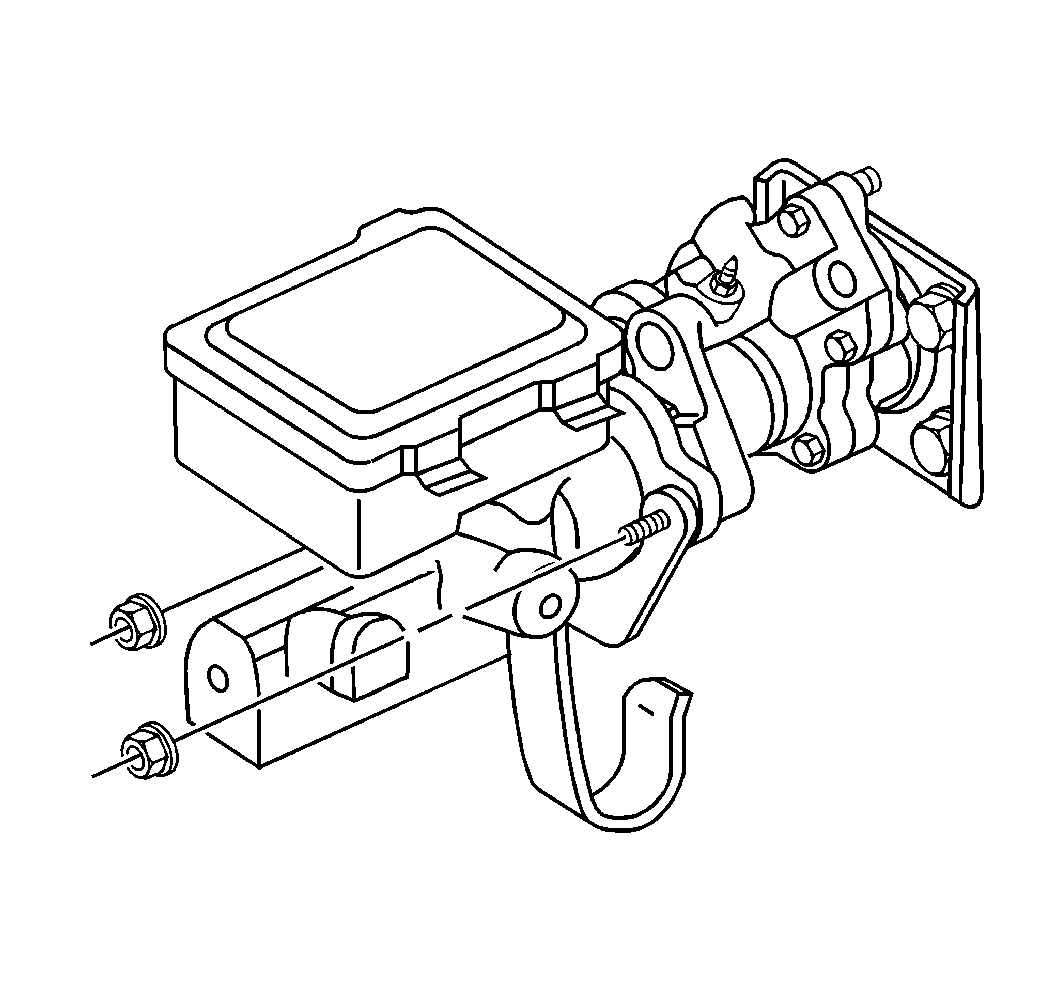
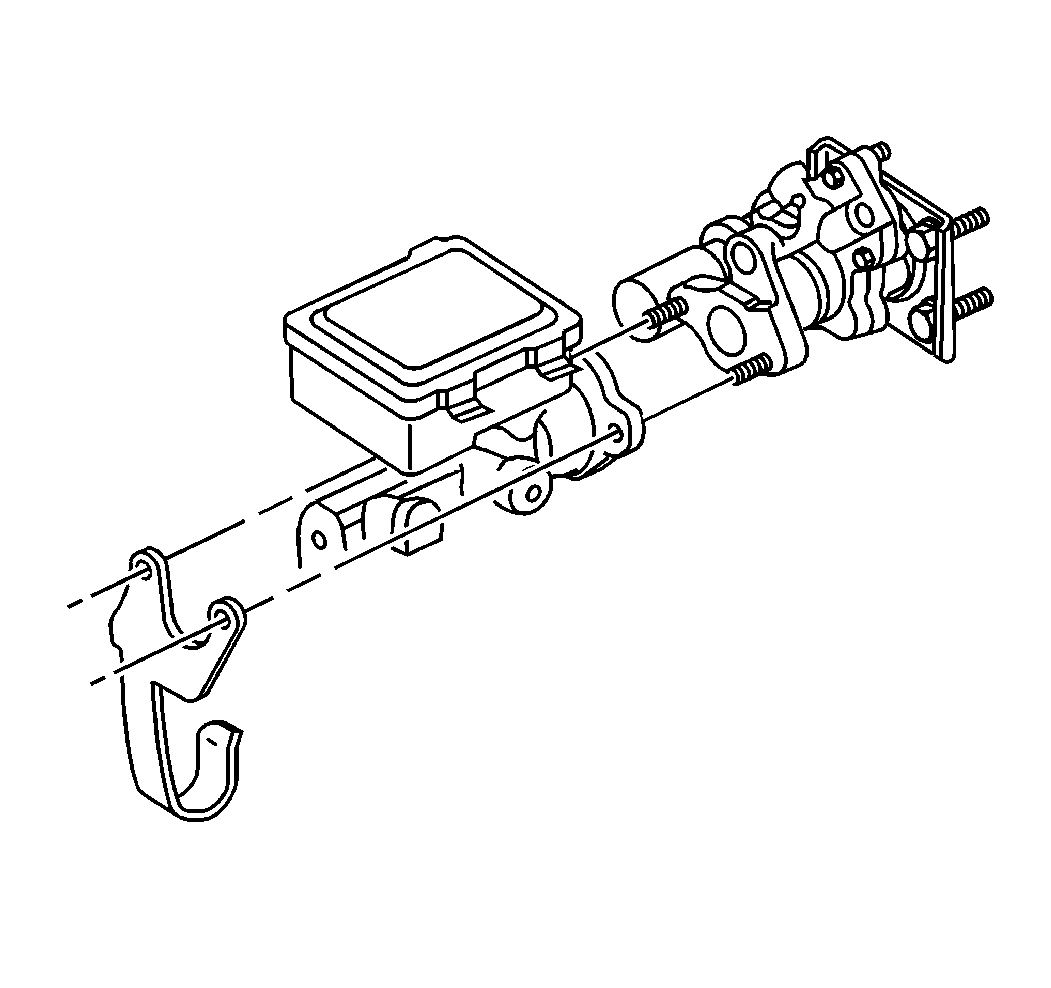
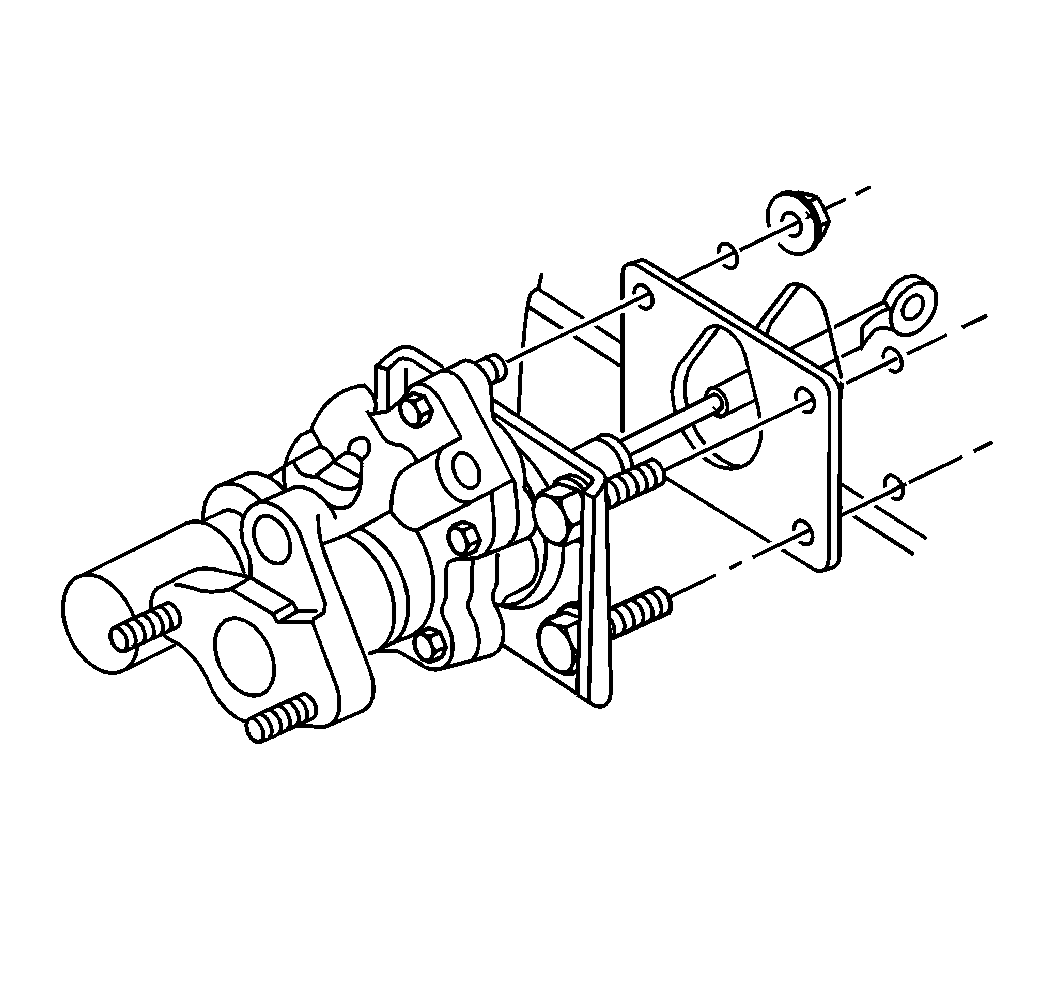
Installation Procedure
- Install the gasket.
- Install the booster assembly.
- Install the nuts.
- Install the stoplamp switch and pushrod.
- Install the master cylinder and bracket.
- Install the master cylinder nuts.
- Connect the return hose, steering gear, and inlet hoses.
- Connect the negative battery cable.
- Bleed the hydraulic booster system. Refer to Power Steering System Bleeding in Power Steering System.

Tighten
Tighten the nuts to 36 N·m (26 lb ft).
Notice: Use the correct fastener in the correct location. Replacement fasteners must be the correct part number for that application. Fasteners requiring replacement or fasteners requiring the use of thread locking compound or sealant are identified in the service procedure. Do not use paints, lubricants, or corrosion inhibitors on fasteners or fastener joint surfaces unless specified. These coatings affect fastener torque and joint clamping force and may damage the fastener. Use the correct tightening sequence and specifications when installing fasteners in order to avoid damage to parts and systems.


Tighten
Tighten the nuts to 30 N·m (20 lb ft).
Power Brake Booster Replacement Accumulator Replacement
Removal Procedure
Caution: The accumulator contains compressed gas. Always use the proper tools and follow the recommended procedures or personal injury may result. Do not apply heat to accumulator. Do not attempt to repair an inoperative accumulator. Always replace an inoperative accumulator with a new one. Dispose of an inoperative accumulator by drilling a 1.5 mm (1/16 in) diameter hole through the end of the accumulator can, opposite the O-ring.
Caution: Push rod removal is not recommended. Improper staking of the push rod to the Hydroboost reaction piston can result in a loss of brakes. If the rod or seals require service, the entire unit must be replaced.
Tools Required
J 26889 Accumulator Piston Compressor.
- Place the J 26889 over the end of the accumulator.
- Install the nuts on the stud.
- Depress the accumulator with a C-clamp.
- Remove the accumulator retainer ring (1).
- Release the C-clamp.
- Remove the nut from the stud.
- Remove the J 26889 .
- Remove the accumulator (2) and O-ring seal (3).
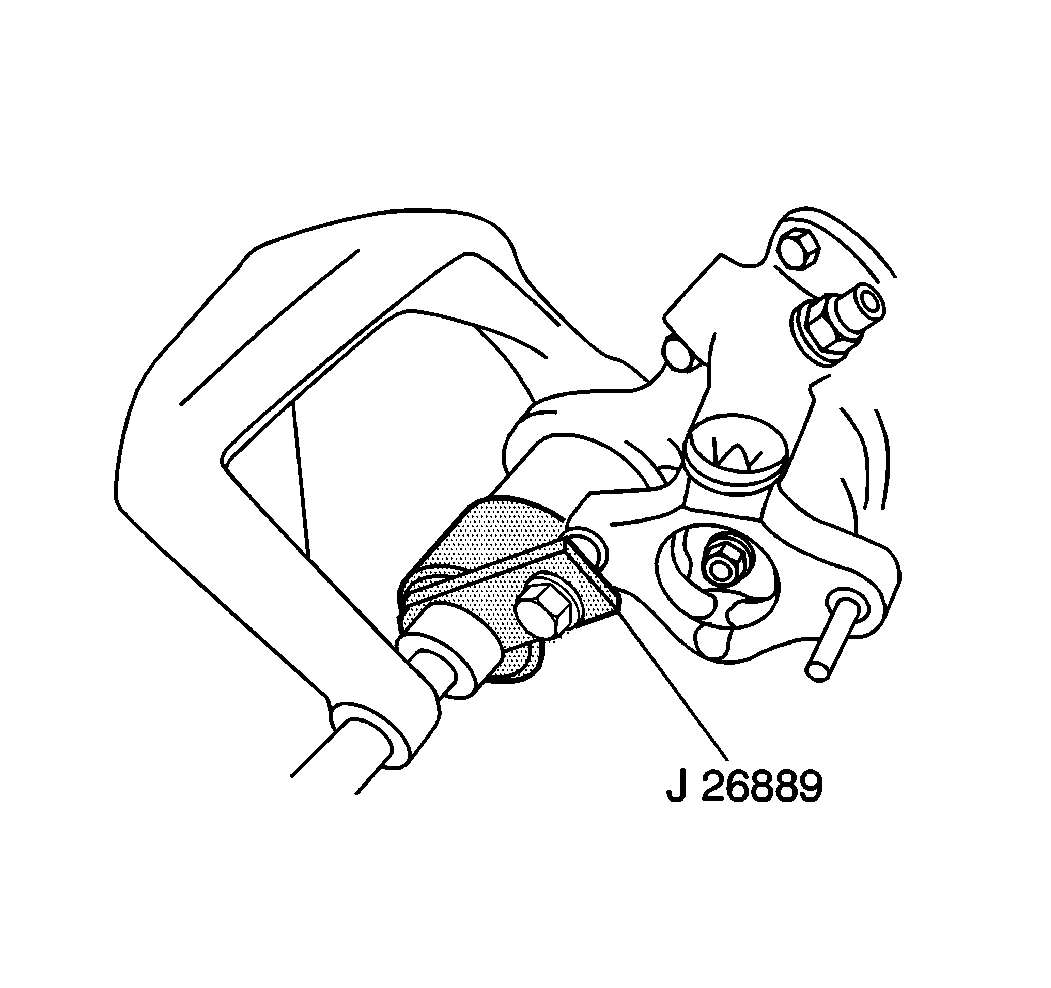
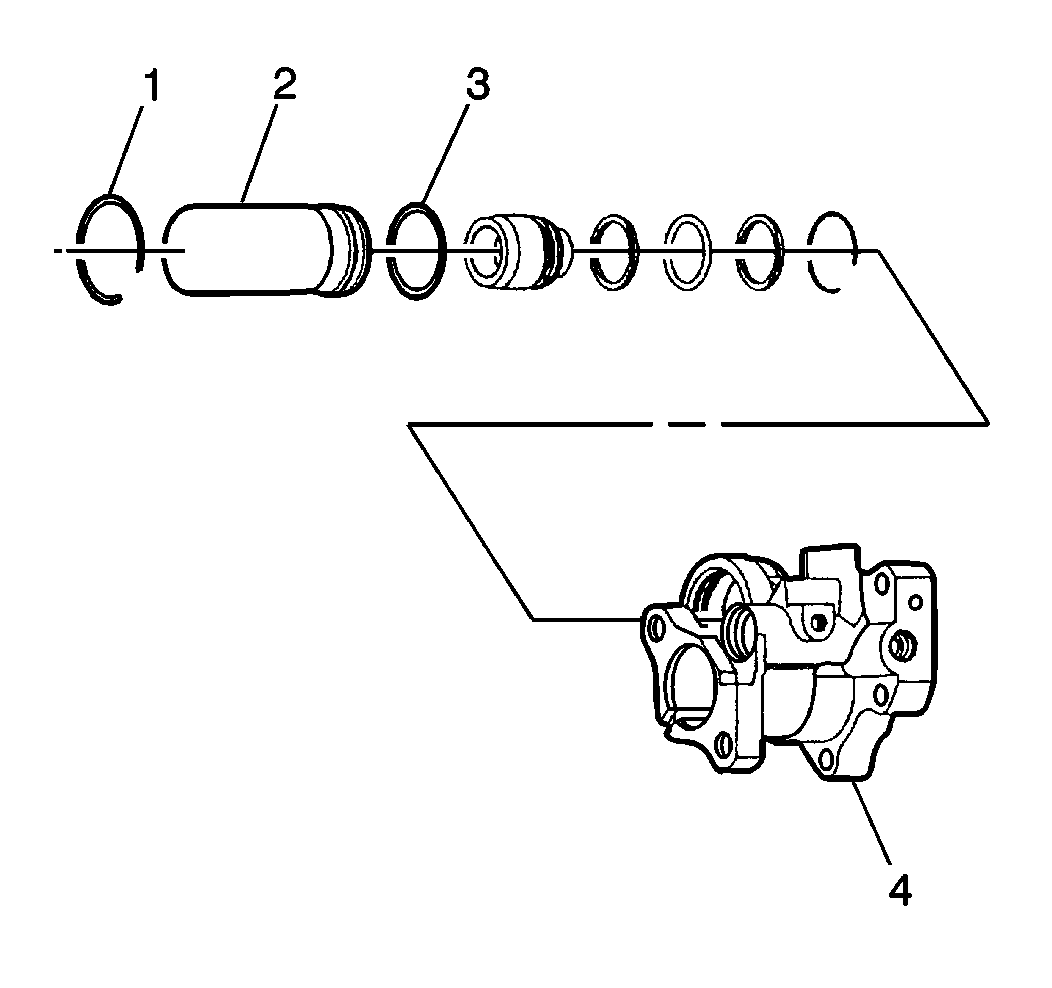


Installation Procedure
- Lubricate all seals and metal friction points with power steering fluid.
- Install the accumulator (2) and O-ring seal (3).
- Place the J 26889 over the end of the accumulator.
- Install the nuts on the stud.
- Depress the accumulator with a C-clamp.
- Install the accumulator retainer ring (1).
- Release the C-clamp.
- Remove the nut from the stud.
- Remove the J 26889 .




Power Brake Booster Replacement Check Valve Replacement
Removal Procedure
Caution: The accumulator contains compressed gas. Always use the proper tools and follow the recommended procedures or personal injury may result. Do not apply heat to accumulator. Do not attempt to repair an inoperative accumulator. Always replace an inoperative accumulator with a new one. Dispose of an inoperative accumulator by drilling a 1.5 mm (1/16 in) diameter hole through the end of the accumulator can, opposite the O-ring.
Caution: Push rod removal is not recommended. Improper staking of the push rod to the Hydroboost reaction piston can result in a loss of brakes. If the rod or seals require service, the entire unit must be replaced.
- Remove the bolts fastening the booster cover to the booster housing.
- Separate the booster cover (2) from the booster housing (1).
- Remove the check valve. Use a locally fabricated wire hook with dimensions as shown.

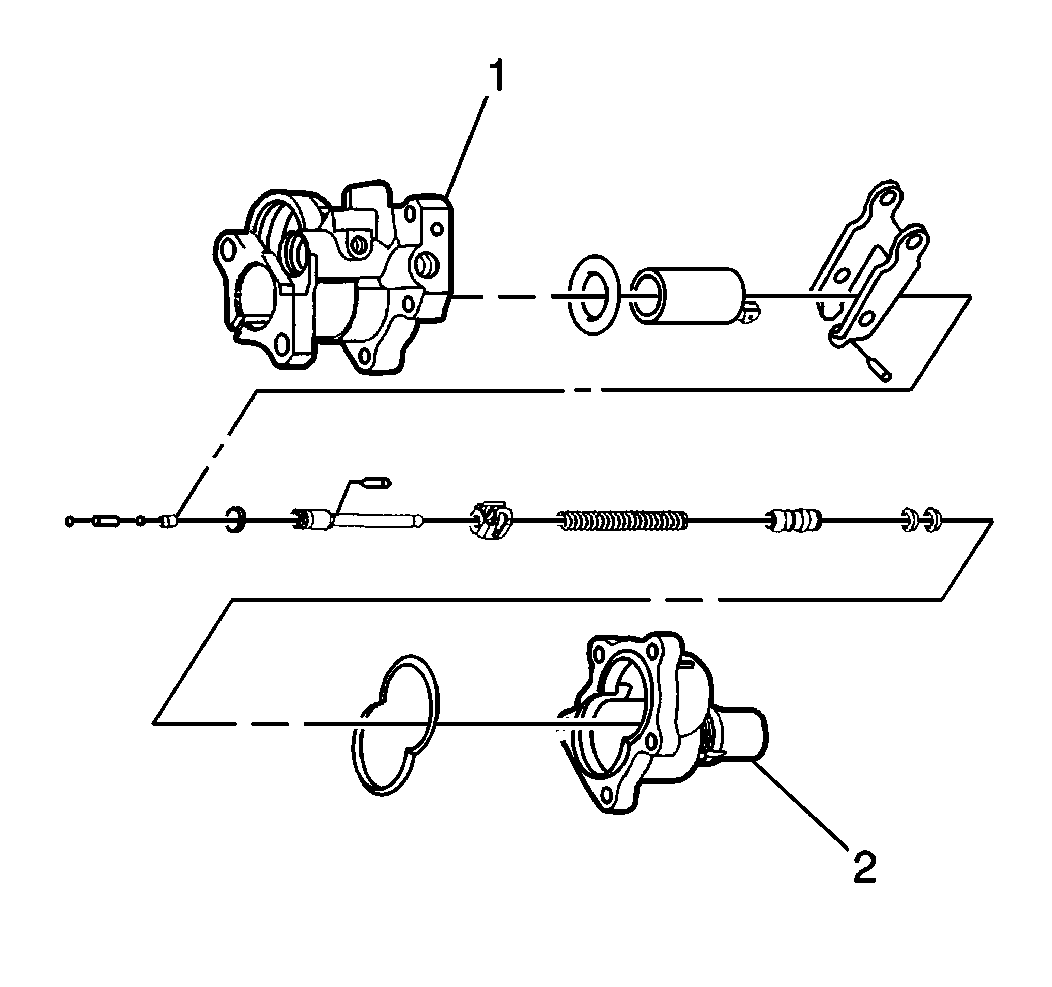
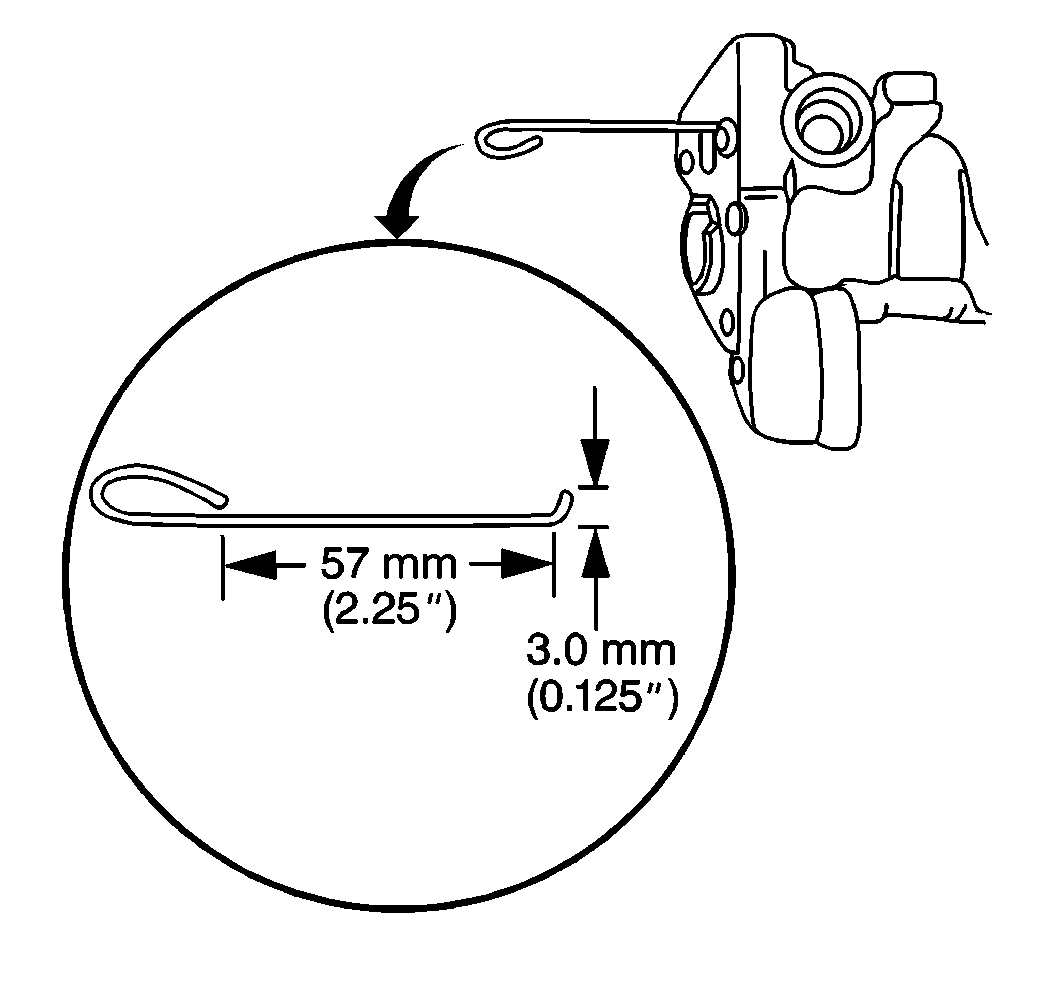
Installation Procedure
- Install the check valve.
- Assemble the booster cover (2) to the booster housing (1).
- Install the bolts fastening the booster cover to the booster housing.


Tighten
Tighten the bolts to 30 N·m (20 lb ft).
Notice: Use the correct fastener in the correct location. Replacement fasteners must be the correct part number for that application. Fasteners requiring replacement or fasteners requiring the use of thread locking compound or sealant are identified in the service procedure. Do not use paints, lubricants, or corrosion inhibitors on fasteners or fastener joint surfaces unless specified. These coatings affect fastener torque and joint clamping force and may damage the fastener. Use the correct tightening sequence and specifications when installing fasteners in order to avoid damage to parts and systems.
Power Brake Booster Replacement Booster Replacement C3500 HD
Notice: Hydraulic brake systems use two distinct and incompatible fluids. Power steering fluid is used in the hydraulic brake booster system. Brake fluid is used in the master cylinder and brake pipes. Use extreme care when selecting brake system fluids, or seal damage can result. Refer to General Information to select the correct fluid.
Checking and Adding Fluid
For information on checking and adding fluid to the hydraulic booster system, refer to Fluid Level in Power Steering System.
Bleeding the Hydraulic Booster System
Refer to Bleeding the Power Steering System in Power Steering System.
Flushing the Hydraulic Booster System
Refer to Flushing the Power Steering System in Power Steering System.
Hydraulic Booster System Pipes, Hoses, and Fittings
Refer to Power Steering Hoses in Power Steering System.
Power Steering Pump
Refer to Power Steering Pump Replacement in Power Steering System.
Removal Procedure
- Disconnect the negative battery cable. Refer to
Caution: Unless directed otherwise, the ignition and start switch must be in the OFF or LOCK position, and all electrical loads must be OFF before servicing any electrical component. Disconnect the negative battery cable to prevent an electrical spark should a tool or equipment come in contact with an exposed electrical terminal. Failure to follow these precautions may result in personal injury and/or damage to the vehicle or its components.
in Cautions and Notices. - Apply the parking brake.
- Disconnect the inlet hose, the steering gear, and the return hoses from the booster assembly.
- Remove the master cylinder nuts.
- Remove the master cylinder and wiring harness bracket.
- Remove the retainer.
- Remove the stoplamp switch and the pushrod.
- Remove the nuts.
- Remove the booster assembly.
- Remove the gasket.
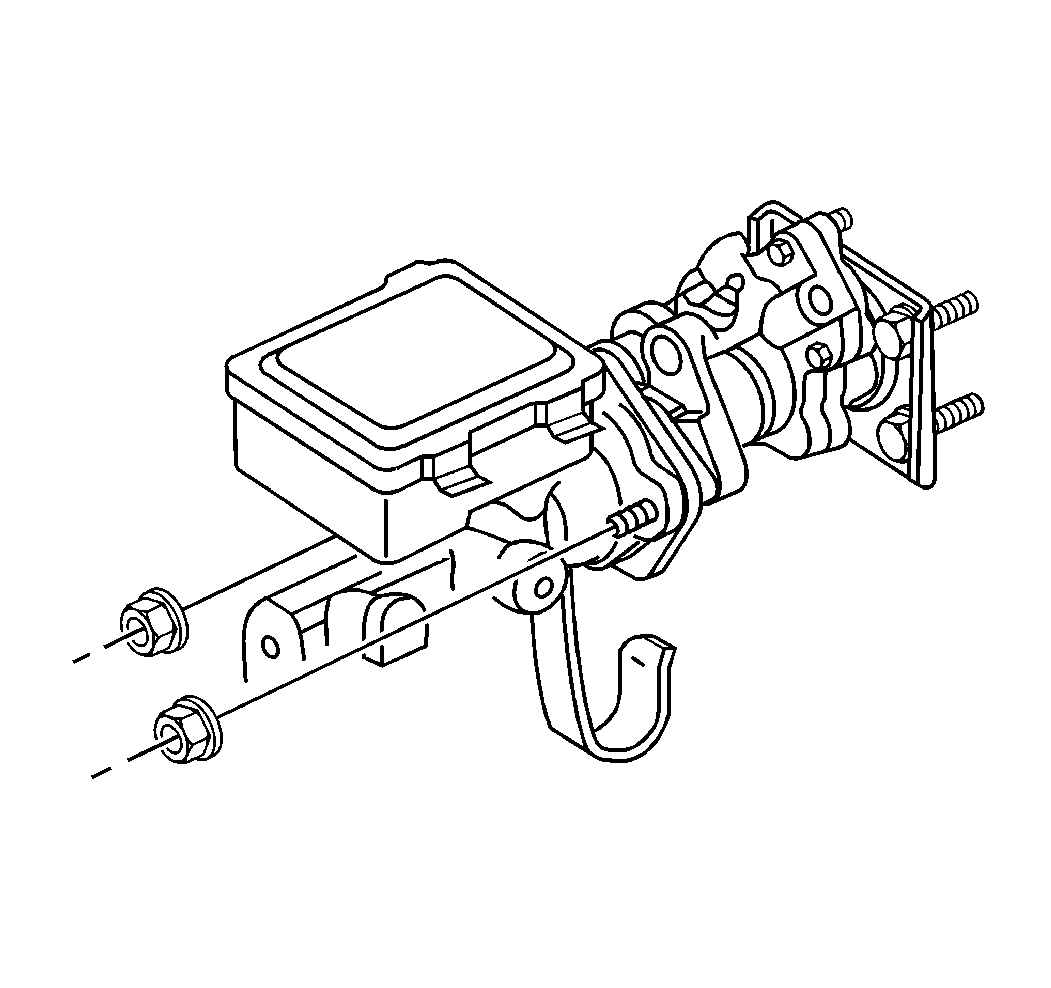
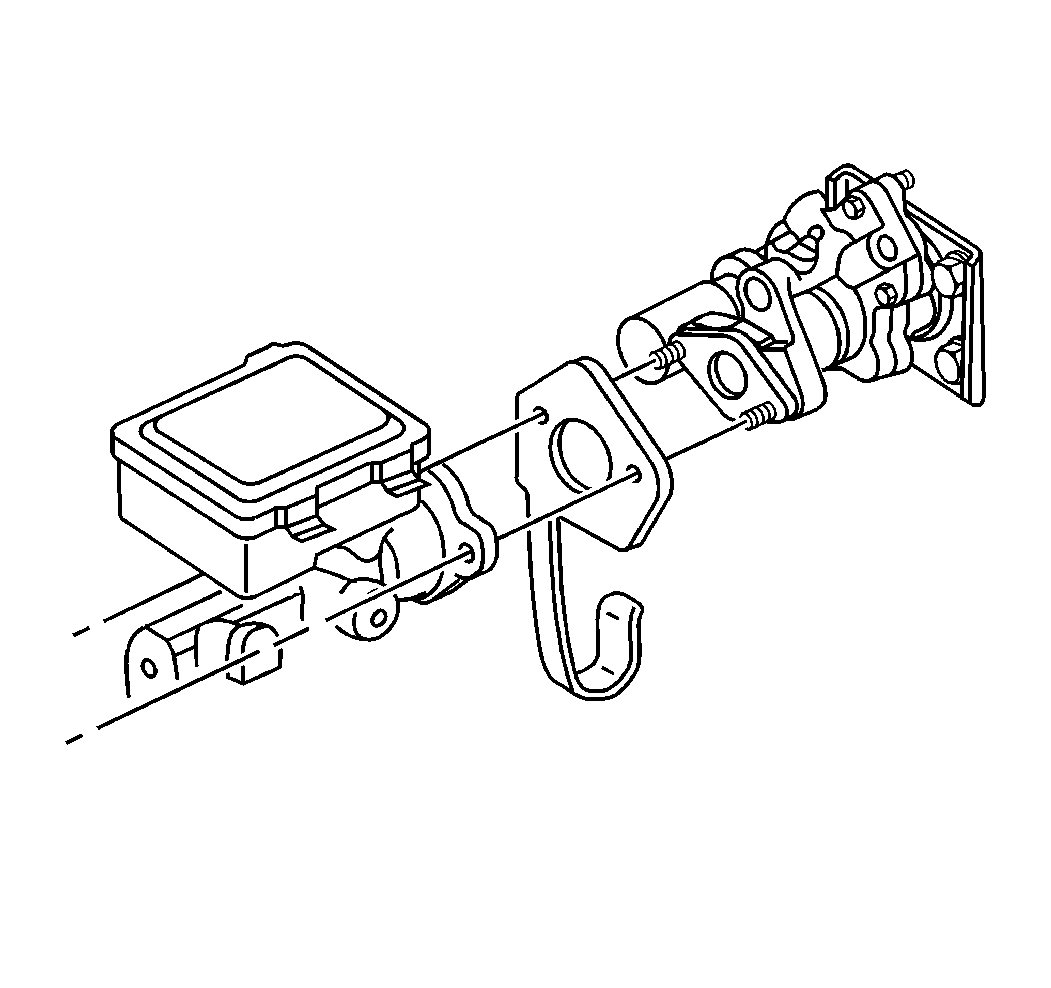
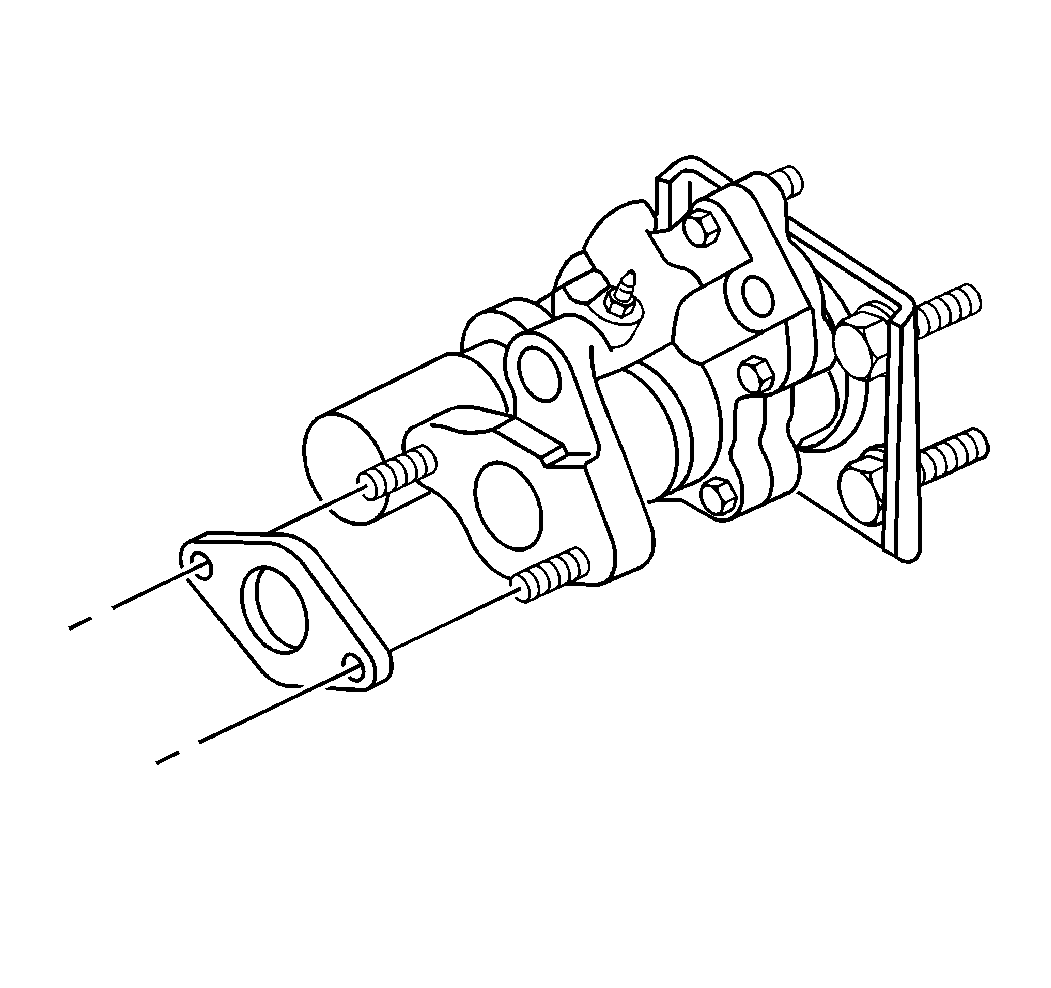

Installation Procedure
- Install the gasket.
- Install the booster assembly.
- Install the nuts.
- Install the stoplamp switch and pushrod.
- Install the retainer.
- Install the master cylinder and bracket.
- Install the master cylinder nuts.
- Connect the return hose, steering gear, and inlet hoses.
- Connect the negative battery cable.
- Bleed the hydraulic booster system. Refer to Power Steering System Bleeding in Power Steering System.

Tighten
Tighten the nuts to 36 N·m (26 lb ft).
Notice: Use the correct fastener in the correct location. Replacement fasteners must be the correct part number for that application. Fasteners requiring replacement or fasteners requiring the use of thread locking compound or sealant are identified in the service procedure. Do not use paints, lubricants, or corrosion inhibitors on fasteners or fastener joint surfaces unless specified. These coatings affect fastener torque and joint clamping force and may damage the fastener. Use the correct tightening sequence and specifications when installing fasteners in order to avoid damage to parts and systems.



Tighten
Tighten the nuts to 30 N·m (20 lb ft).
